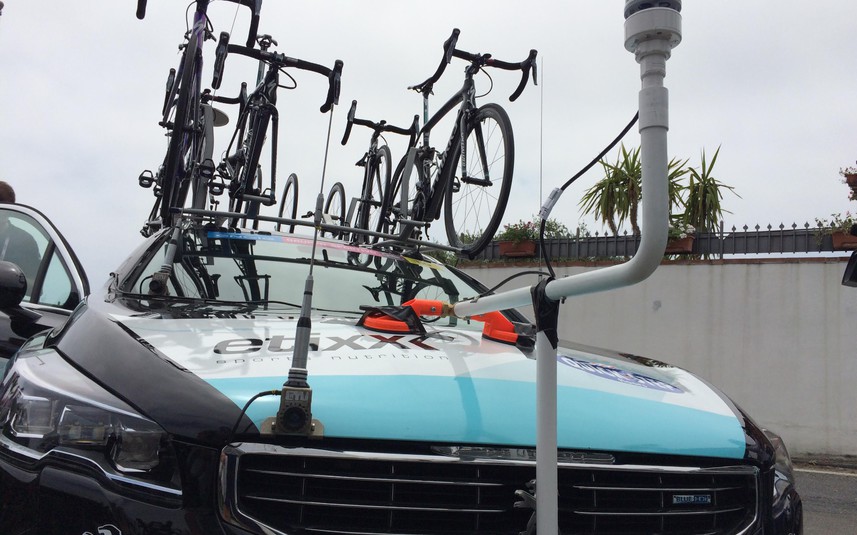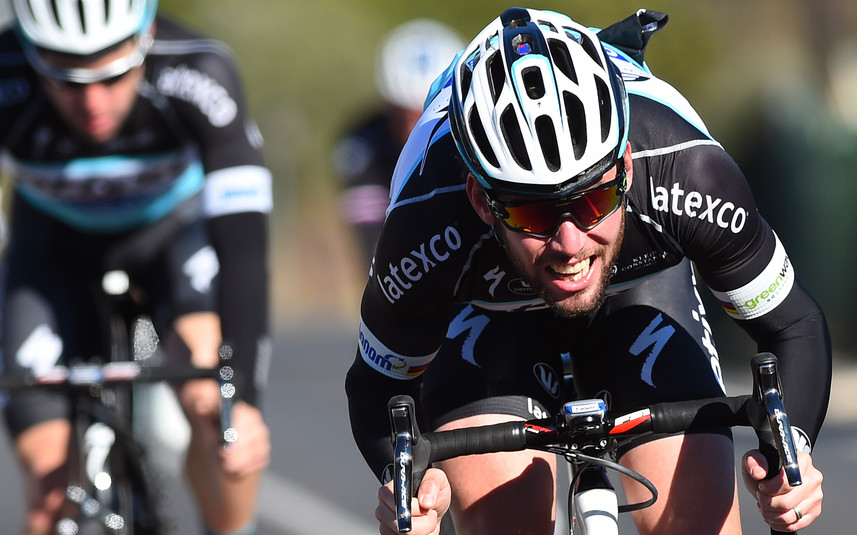
How do our Etixx - Quick-Step riders eat during the season? What do they eat? Etixx Sports Nutrition gives the explanation in the text below!
Introduction
"How do they do it?": everyone who sees professional cyclists at work in the Tour de France, the Vuelta or the Giro probably wonders about this. How is it possible that such tendril and slender athletes are able to deliver such great performances? Undoubtedly, the body of a rider suffers during such a multi-day stage race. The non-stop racing, the difference in weather circumstances (during the last Tour de France the riders event went from 30° C to 4° C and snow in a single stage!). The alternation of rest days, followed by heavy mountain stages, then back to flat stages... Only those who are in excellent shape, can come out of this unharmed!
Being in good shape starts with an excellent health and a good immune system. Nutrition plays in important part in this. All that the riders eat, has a direct influence on their overall health, their performance level, but also on the speed of the recovery afterwards. And this can be of crucial importance during such a multi-day race. Nutrition has an important contribution to the shape of the riders. Weight and body fat are also important parameters in this context. During the Tour de France 2015, this issue was a hot topic: "How low can one go in body fat percentage?" was the subject of many discussions and articles.
The Etixx-Quickstep cycling team was not mentioned in this debate. This article gives the reader more insight into the general nutrition principles of the team.
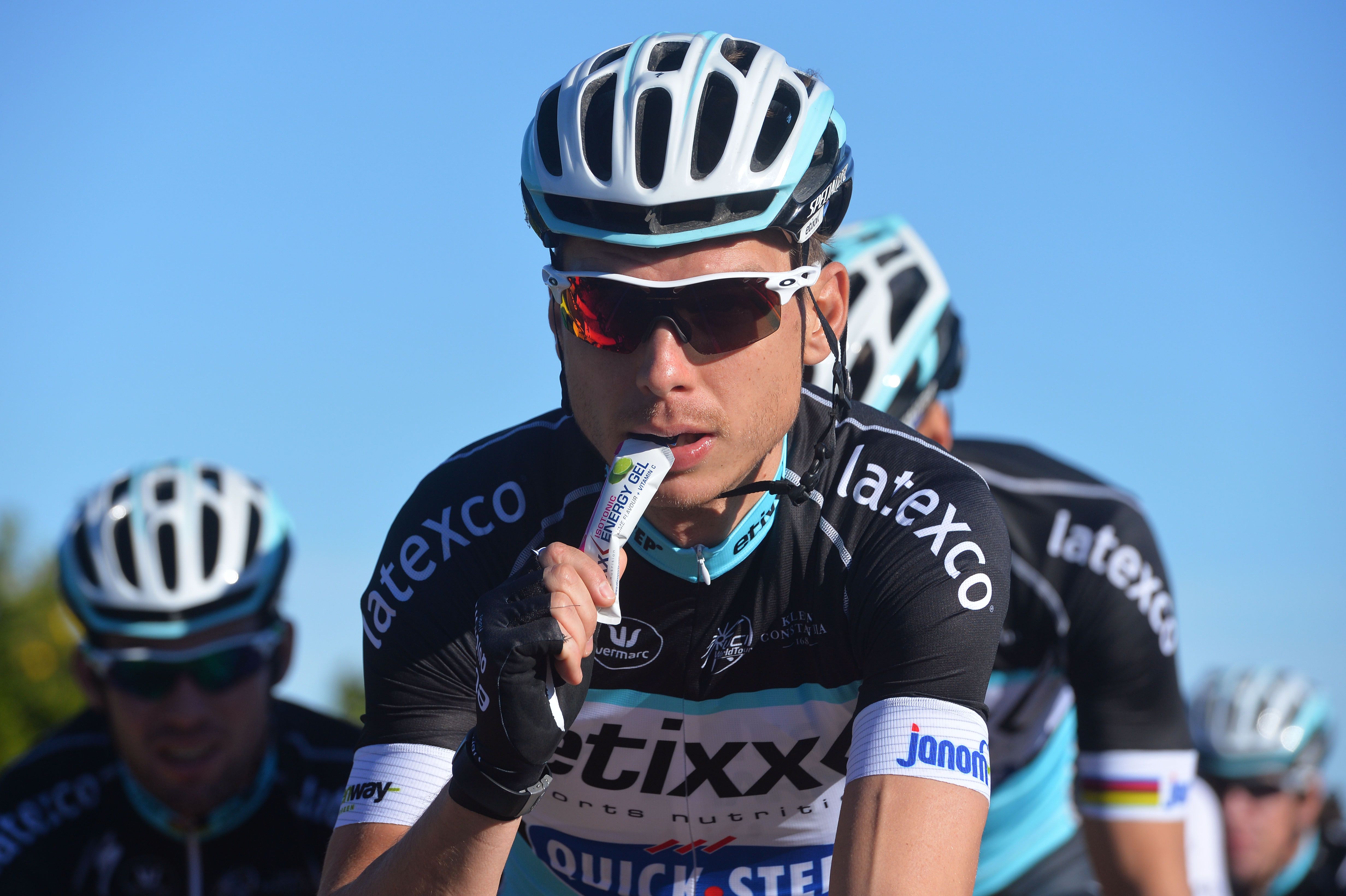
Preparation
First of all, during the preparation period, the riders have to aim for a balanced diet with a variation of carbohydrates, proteins, fats, minerals and vitamins. Carbohydrates fuel the muscles, they deliver the energy that is needed for the performance. Proteins are important for the muscle build-up and for the recovery of the muscles afterwards. Fats will be taken in to a limited extend, especially when the riders seeks to have a low percentage of body fat.
The daily energy need of a professional cyclist depends of many different factors. Especially the nature of the effort (intensive or not) and the duration of the effort are important in this context. Generally, it can be stated that the energy-intake of a professional rider is high. During the Tour de France for example, a rider can use 6500kcal during a stage. A mountain stage can raise this amount to 10 000kcal. For comparison: the daily need of a normal man is 2500kcal.
Sufficient variation in the nutrition program is appropriate to have the necessary vitamins and minerals. Some cyclists prefer a bit of support in this area, because of nutrition preferences or unilateral eating habits. They make sure to supplement their diet with multi-vitamins and/or iron. During heavy training periods, or in an intense preparation period, these supplements are standard used.
Nutrition before the stage
Before the performance, it's extremely important to maximize the glycogen reserves (reserves of carbohydrates). In case of races during longer than 3 hours, it's necessary to start with this maximizing several days (2 to 3 days) before the race. The training sessions are decreased and the level of carbohydrates increased. All this in combination with limiting fats and fibers in the nutrition. This is what they call 'carbo-loading'. Professional riders need to carbo-load, because their body fat percentage is very low (6%-10% max), so they don't have any fats in reserve to burn during the performance.
During multi-day races it is essential to replenish the burned nutritional elements. To do so, the riders take in decent portions of carbohydrates and proteins. In between, riders often eat or drink snacks like Carbo-Gy, Isotonic or an Energy Sport Bar.
The day of the race
When the riders get up in the morning, they start loading up the carbohydrates that are needed for the race of the day. Most of the times, the race starts before noon, so then the riders' breakfast will be their race meal. Breakfast usually consists of white bread, toast, pancakes, cereal, jam, honey, bananas... And this is big portions! Some riders eat pasta or rice at breakfast, but this is not necessary, it's more about personal preference or tradition. After breakfast, they drink Isotonic or Carbo-Gy, these are fluid carbohydrates which are easily ingested. This can be in combination with an Energy Sport Bar and this until just before the start.
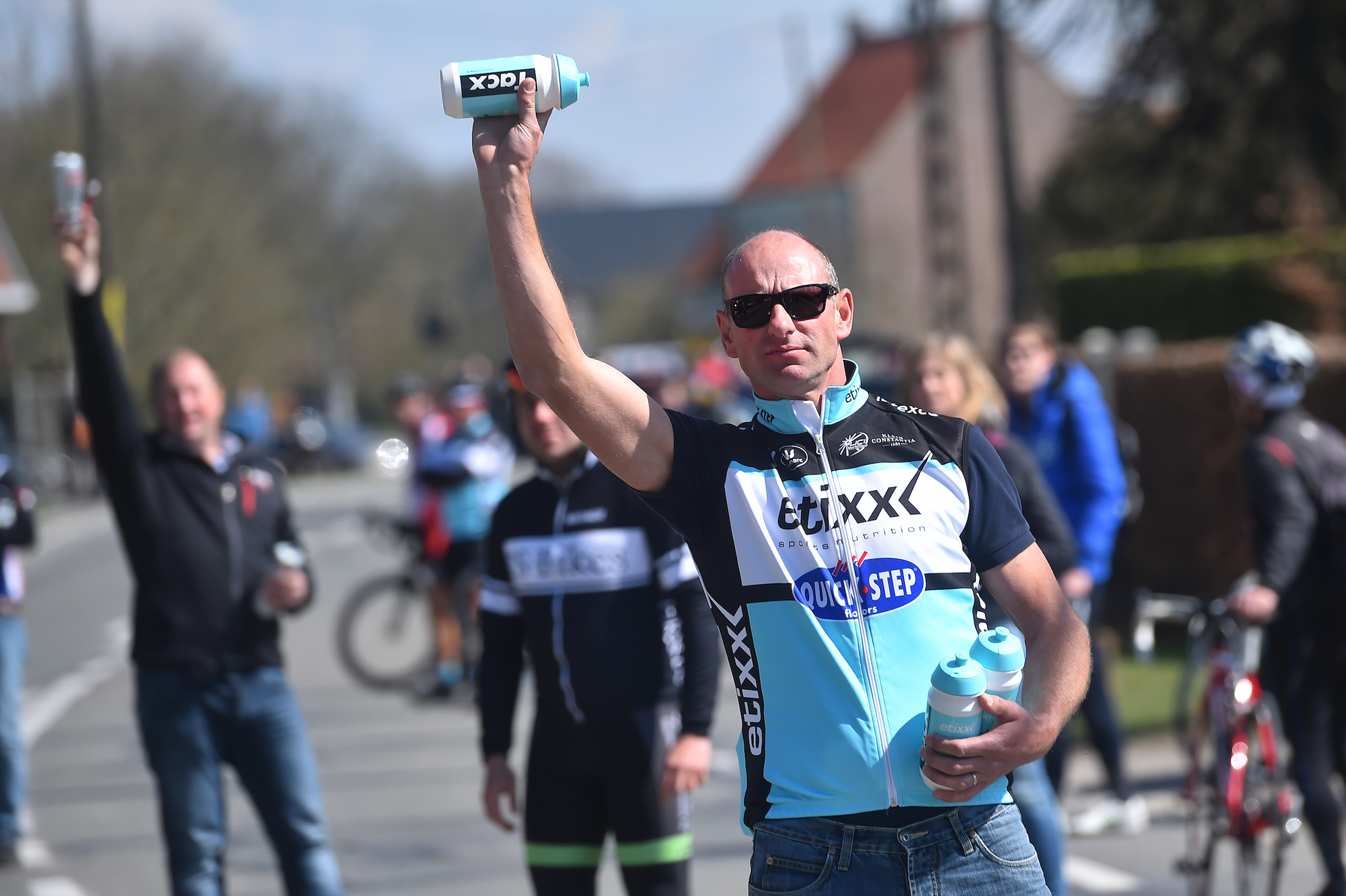
During the race
Considering nutrition, the most important task for the riders during the race is to replenish carbohydrates and fluids. The amount of carbohydrates that is taken in, is dependent on the duration and intensity of the stage. On average, the intake of carbohydrates is about 60 gr per hour, but in longer races, they aim at 90 gr per hour. In the professional cycling world, the majority of the races are longer ones, except for the time trials. Making sure they take in those 90 gr of carbohydrates per hour, is a difficult task. It's only possible by using a special mix of carbohydrates. For this purpose, Etixx has developed the Isotonic, recently with the new watermelon flavor. Etixx follows the scientific developments within the world of sports nutrition closely, and works in close collaboration with the riders to get detailed feedback. Products that taste good and are accessible, are more often used. Most of the time, at the beginning of the race, the riders use Energy Sport Bars, combined with Isotonic. Towards the end of the race, the riders will limit themselves to the use of fluid nutrition, because it is easier to ingest. If the rider is in need of an quick energy boost, he opts for the Ginseng & Guarana Energy Gel.
Every riders has his personal preferences. Some riders prefer bars, others prefer using gels. Next to carbohydrates, the replenishing of fluids is another important aspect for the riders. The riders go get the bottles at the team car and bring them to the front men. The average fluid intake is 500-750 ml per hour, depending on the weather conditions.
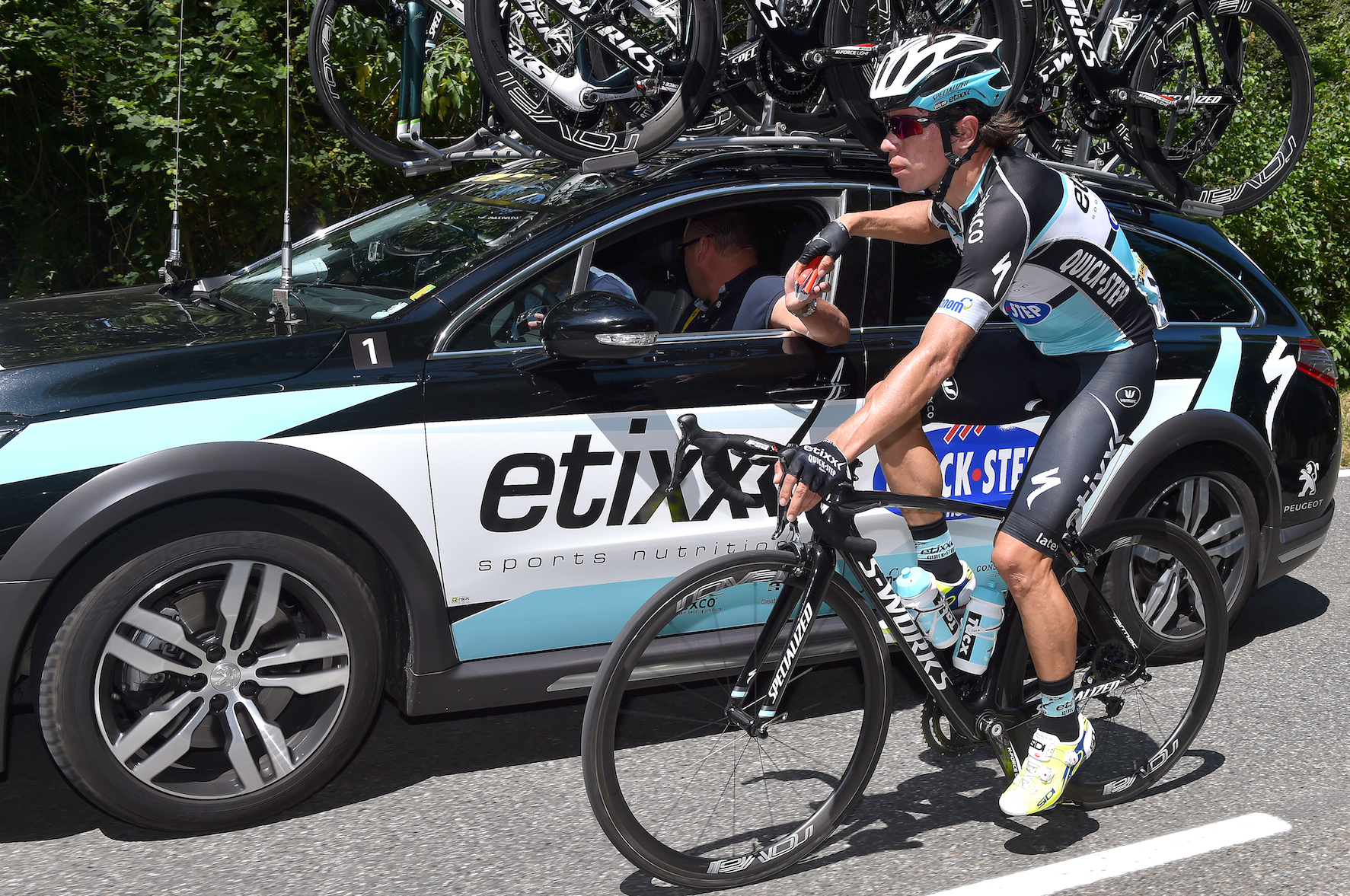
After the race
After the stage, the rider immediately receive a Recovery Shake, which consists of proteins and carbohydrates. After all, is still takes a while for the riders to get to the hotel. The recovery drink provides a first recovery for the muscles and already replenishes a part of the burnt carbohydrates. In the bus on their way to the hotel, there are some sandwiches, Energy Bars and Isotonic for the hungry riders. Furthermore, it is really important to replenish the lost fluids after the performance. The riders need to refill, this can run up to 2 or 3 liters. At the arrival at the hotel, the riders have a normal meal. An enjoyable meal is not only good for the morale, but also great for team spirit!

Do you want to know what is the favorite taste of Rigoberto Uran, or the favorite bar of Michal Kwiatkowski? Team Doctor Helge Riepenhof lets you know all about how we utilize our Etixx Sports Nutrition!

Time trials are often decided by a few seconds. With no shelter from the wind, every weakness equates seconds lost at the finish line. Teams prepare for time trials weeks in advance, by inspecting the course and carefully assessing equipment choice in detail.
This behind-the-scenes story reveals how Specialized Racing contributes to the Etixx–QuickStep Team's preparations, providing both high performing equipment as well as technical assistance.
Once the course details are known, S-Racing staff drives the route with an instrumented car, outfitted with:
1. High-accuracy GPS
2. Ultrasonic multi-direction wind speed sensor
3. Sensors to measure temperature and other environmental factors
4. High-definition camera
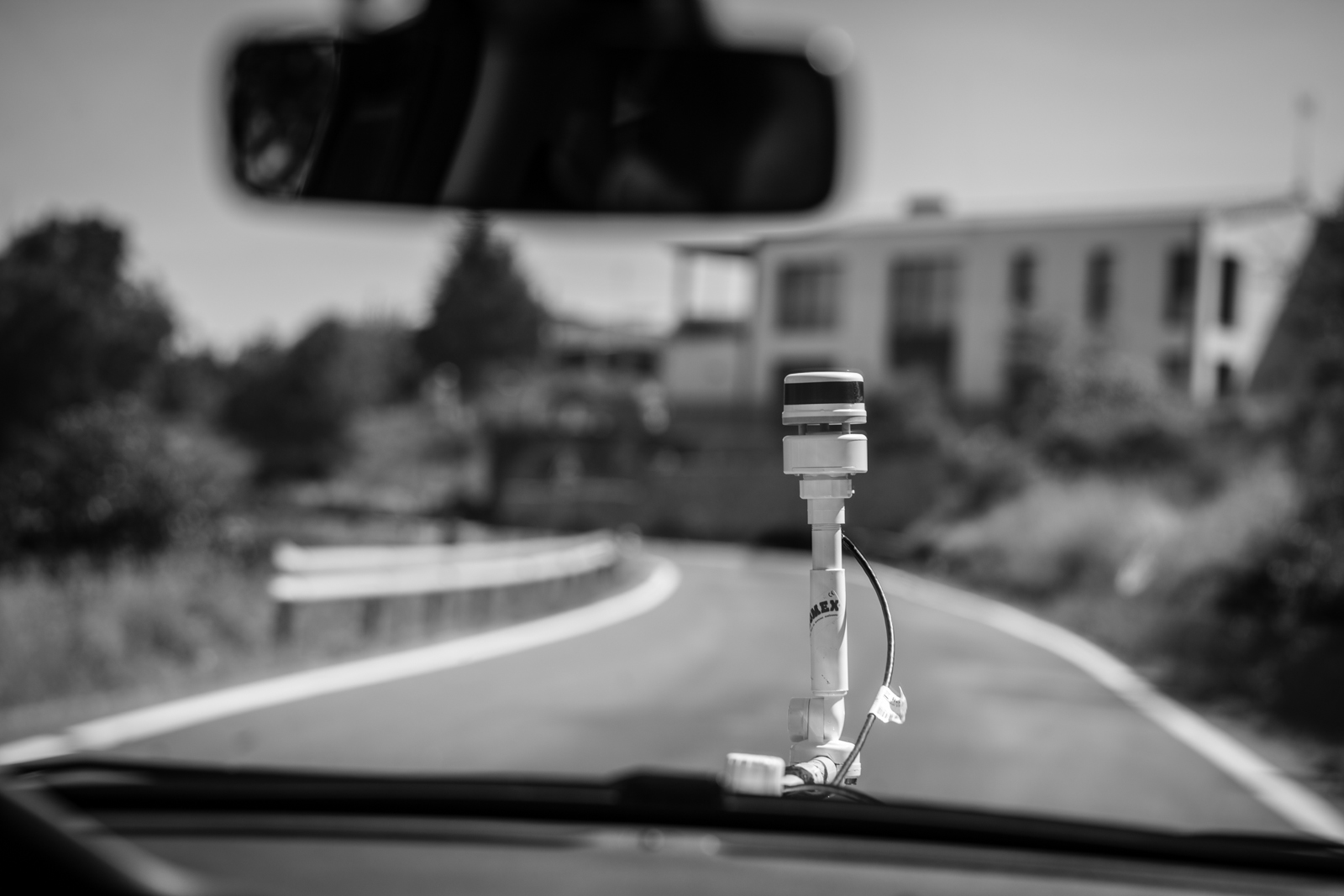
Photo: team car with ultrasonic multi-direction wind speed sensor mounted to hood.
The route reconnaissance is carried out multiple times. The initial run is conducted far in advance, to assess the potential weather conditions forecasted at the race time. The final recon is held as close as possible to the time at which the race will start.
To connect all the sensors, GPS, multi-direction sensor, and so on, the staff relies on a computer placed inside the car. The computer links all the data collected, creating a very precise map, assessing all the variables in one place.
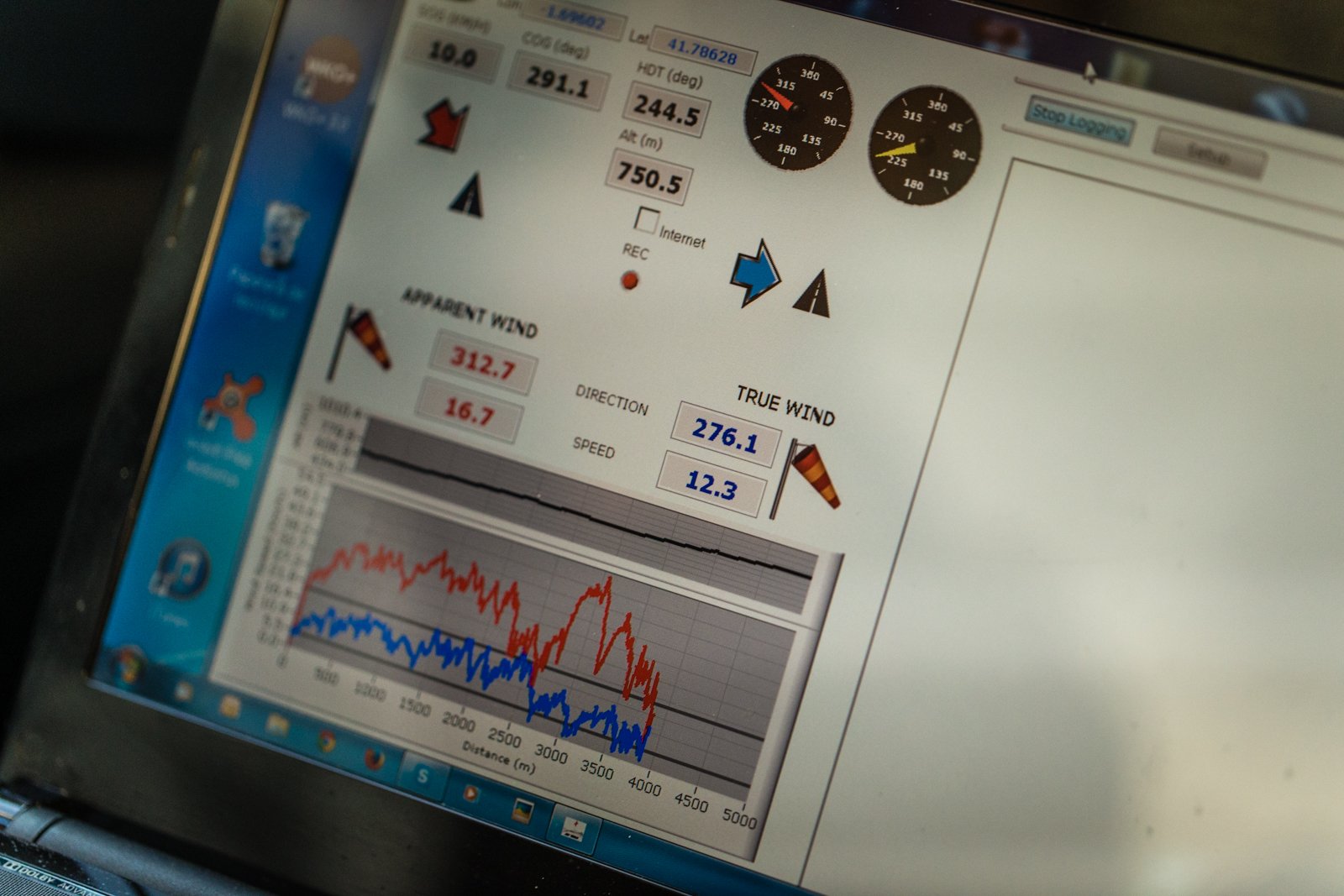
Photo: laptop inside team car with landing page for all data.
Once the course survey is finished, S-Racing runs several computer simulations of the race route to determine the best equipment and pacing strategy for the team. The simulations are fed with data generated earlier in the year, captured at the track and "Win Tunnel" tests run in the labs in Morgan Hill, and the expected power output for the athlete.
During these race reproductions, different scenarios are considered and simulated. A crucial feature is that the team can see how different choices can negatively or positively affect race results, such as:
Over- or under-pacing a part of the course Change in wind conditions Using a different equipment
For example, Etixx-QuickStep uses Vision wheels for a time trial, which are available in a variety of depths; further, there is a three-spoke for the front and a disc for the rear. While high profile wheels are more aerodynamic, especially in stronger side winds, they are typically heavier with higher inertia, and can be more of a challenge to handle in crosswinds. S-Racing can help eliminate poor choices and uses scientific data to suggest the right height of a wheel profile, the right tire and so on. Aside from the data itself, S-Racing has a good understanding of what the directeurs sportifs need, and which choice will suit which individual athletes.
At the end of the two processes, inspection and simulation, S-Racing turns raw data into valuable information. Then it's up to the team's decision-makers to incorporate the data as well as riders' feedback in the final selection.

Etixx - Quick-Step worked with Specialized Body Geometry to optimize our performances on our Shiv time trial bikes. Testing was performed at the Vlaams Wielercentrum Eddy Merckx. Our latest video explains to you the process of analyzing information & data, which was collected as we rode in the velodrome! #OurWay

Specialized Racing provided Etixx - Quick-Step with pre-race analysis of Milano-Sanremo! The details are below.
Overview
Milano – Sanremo is one of the most unpredictable races in the entire cycling calendar. There are three important elements that in the last editions have characterized this race, elements that we have taken some time to analyze.
The first one is represented in the initial five hours of the race that include the climb of Turchino and Cipressa, but also the entrance on the coastal road of Liguria.
The second one is represented by the climb and consequent descent of the Poggio. And the third one that brings the riders to the final Kilometer of the race.
The first five hours
The first hours of the race is a battle to stay as hidden as possible to save as much energy as possible. If being positioned in the middle of the peloton is the way to go, adding the right choice of equipment helps a rider to save even more.
Things to analyze are the different roles of the riders, including the one of the domestiques that will have to control the race in the front, according to the respective teams’ strategies. Being very exposed, aerodynamics is very important as it gives longevity to the effort.
Even though the first part of the course sees the climb of Turchino and Cipressa, aerodynamics is still a factor given the high speed at which these two climbs are negotiated.
- Going from a Prevail Helmet to an Evade Helmet saves 85kJ or roughly the equivalent of one Energy Gel
- The draft a potential winner gets from just one rider over this segment equals 600kJ (7 Energy Gels), if he spends the entire time deep in the pack he even saves 1500kJ (18 Energy gels)
- The Energy saving effect of the Evade Helmet still holds true, when deep in the pack.
The Poggio Element
The climb
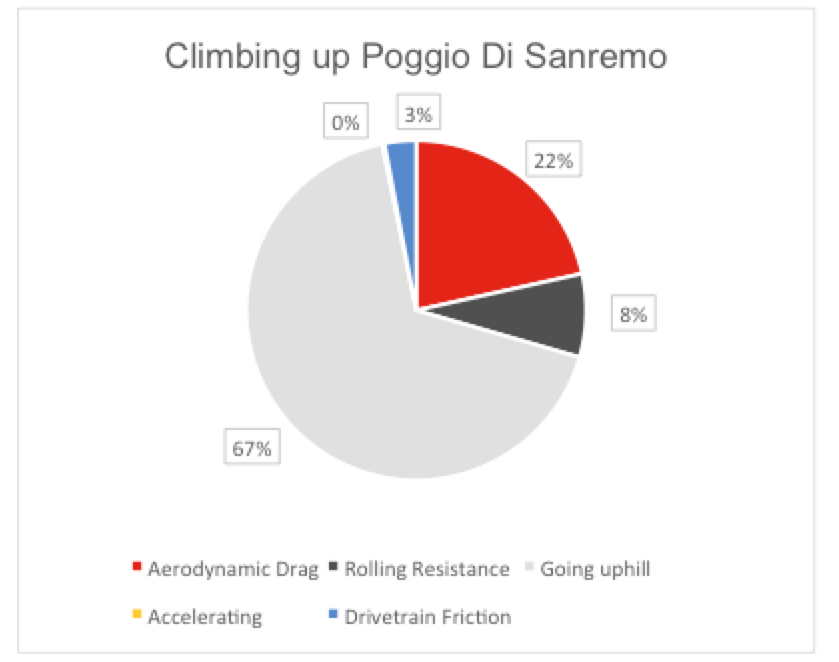
- Even though gravity is the biggest resistance going up the Poggio, it is still a balancing game of aerodynamics and weight. An aero set up consisting on the Venge still saves 6 Watts over a Tarmac during this climb.
- We estimate that the climb will be ridden in less than 7’ that makes of it a very fast ascent. While riders less prone to sprint will be maximizing their effort along the Poggio, sprinters will try to save the loss as much as they can. Staying as close as possible with the top of the field by limiting their gaps will help them to recover along the fast and winding descent.
The Descent
- The Poggio descent is fast and winding and it will be headed at a high speed. Less than 5’ for regroup, in case a rider has been left behind during the ascent of the Poggio. The effort will be violent and can show relevant power consumption, even though it is a downhill.
- Aero is still relevant, along with another component, the combination of tires and wheels. Specialized has develop a huge knowledge in tires performance and the Specialized Turbo is the result of it. Low rolling resistance and great grip is what’s needed in extreme situation like the Poggio descent. Even more with rainy conditions.
- Teams along with Specialized Racing are working extensively on defining the best tire pressure and to make sure the riders arrive at the Poggio with the right conditions.
- Going down the Poggio a rider has to rely on fast wheels, with a great brake performance and an incredible acceleration. Most of our top riders will be racing the Roval CLX 60 as it is a combination of all the features a rider is looking at.
The Sprint (Last Kilometer)
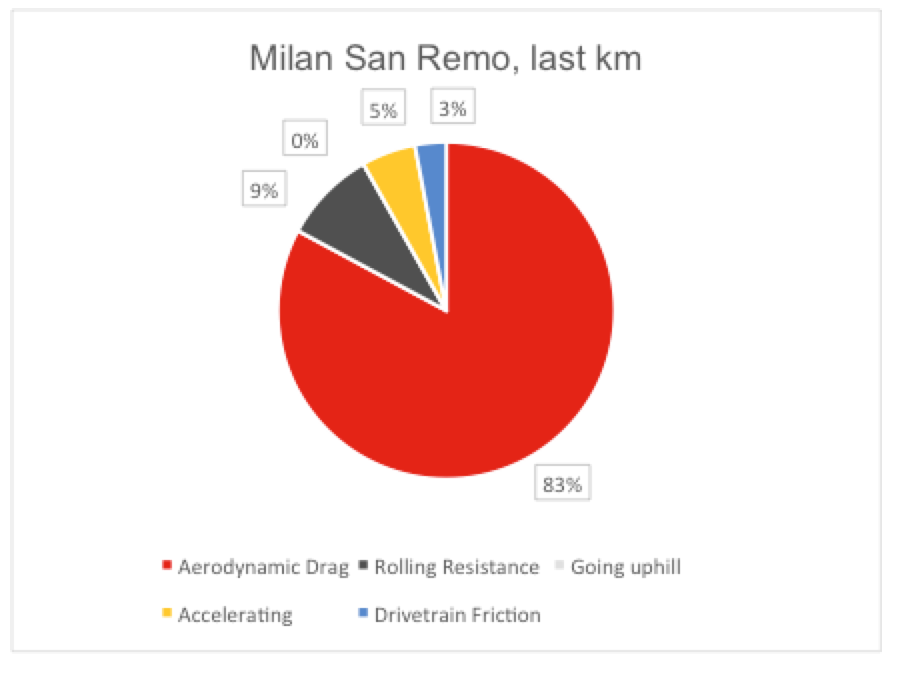
- In the last km aero truly is everything. 83% of the overall resistance is aerodynamic resistance, showing that the air and not the weight is the athlete’s biggest enemy.
- One Example: in case of a sprint finish, a sprinter starts his final surge with about 200m to go. He cranks the pedals hard, reaching maximum power three seconds into the surge and accelerates quickly. Let’s suppose that sprinter A on the Venge completes the 200m in 11.7 seconds. His identical opponent, sprinter B that produces the same power at the same time, uses a Tarmac. He reaches the finish in 11.8 seconds or roughly 1.5 meters behind sprinter A.
CONCLUSIONS
Milano-Sanremo is a long race where aerodynamics plays a big role, but there are other elements a rider must consider if he wants to aim for the ultimate success.
This Classic is difficult to be interpreted and it requires a lot of attention to the details when it comes to selecting the right equipment.
From the domestique to the leader, the set ups need to be selected with care, as they can change a lot to the final result.
Specialized best set up for Sunday consists in:
- Venge;
- Roval CLX60
- Specialized Turbo
- Evade Helmet






